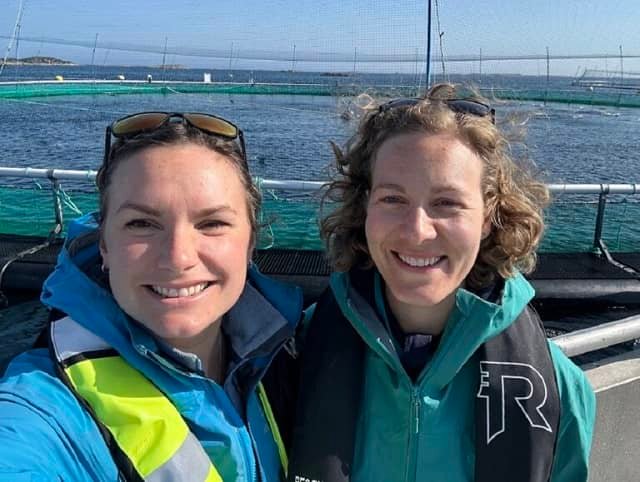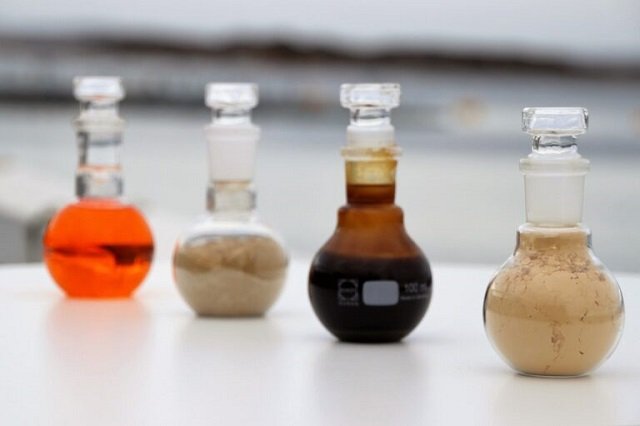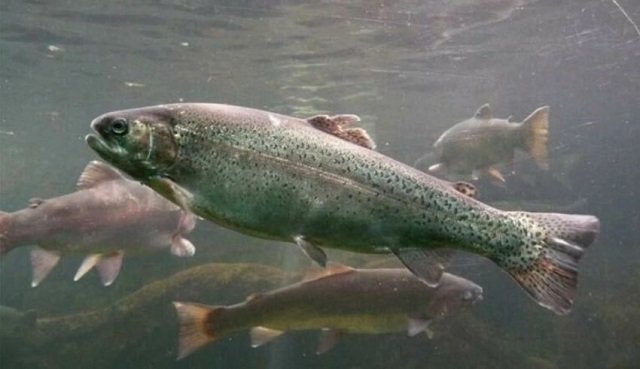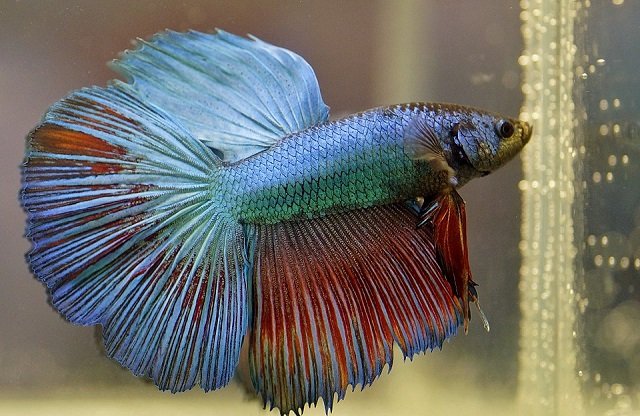In the ongoing quest for more sustainable and nutritious sources of food for the salmon industry, researchers have turned their attention to salmon protein hydrolysates.
A recent study conducted by researchers from the Norwegian University of Science and Technology (NTNU) and Nutrimar AS aimed to characterize a salmon protein hydrolysate (FPH) in terms of prion content and to evaluate how its partial inclusion in the diet of Atlantic salmon (Salmo salar) affects growth, digestibility, and intestinal health.
The results of this research hold the potential to revolutionize salmon feeding practices in the aquaculture industry.
Making the Most of Salmon
Researchers emphasize the importance of utilizing all parts of farmed salmon, as this not only benefits the environment but also ensures the well-being of the salmon. Utilizing a higher proportion of the salmon in the salmon industry can reduce its dependence on imported marine ingredients, such as fish meal and fish oil, for salmon feed.
“Norway currently exports a significant amount of whole salmon, including the head, skin, and bones. Instead, we could use this remaining raw material to manufacture food or feed ingredients for salmon in Norway,” said Ingrid Schafroth Sandbakken, an industrial Ph.D. candidate at Nutrimar in Trondheim, Faculty of Natural Sciences at NTNU.

What Is Salmon Hydrolysate?
Salmon hydrolysate is produced when leftover raw materials are broken down with the help of enzymes, which are naturally found in the stomachs of fish (and humans). These enzymes aid in the digestion of food and the breakdown of nutrients into smaller pieces that can be absorbed in the intestines.
“Enzymes break the bonds between amino acids in proteins to form peptides and free amino acids,” Sandbakken explains.
This hydrolysate can then be reintroduced into the food chain by feeding it to salmon. The advantages of using hydrolysate include easy digestibility and good taste, which encourages increased fish consumption.
Stay Always Informed
Join our communities to instantly receive the most important news, reports, and analysis from the aquaculture industry.
While salmon hydrolysate is currently used mainly in pet foods, there is no hindrance to its utilization in the salmon industry. Norwegian legislation permits the use of salmon oil and salmon hydrolysate in salmon feed, and salmon readily consume them.

Salmon as a Predator
One might question whether this constitutes cannibalism. However, it does not, as the proteins are broken down to a point where their origin is unrecognizable without DNA analysis. “Salmon are predators. In nature, predatory fish do not differentiate between species. They only distinguish between what fits in their mouths and what doesn’t,” explains Sandbakken.
Wild salmon have no aversion to a bit of cannibalism, and other species, like cod, exhibit cannibalistic behavior to a much greater extent. Therefore, it is entirely safe to use leftover salmon raw material in salmon feed. The current salmon feed accounts for over 75 percent of the greenhouse gas emissions from the salmon industry.
The Norwegian government has set a goal at the Hurdal Platform that all Norwegian animal and fish feed must be 100 percent sustainable by 2030. This means making the most of the resources already available and producing entirely new types of feed ingredients. Salmon offcuts and trimmings are not waste but valuable residual raw materials that can be reintroduced into the food chain.
A Growing Need for Salmon Feed Ingredients
“We have a significant need for new local and sustainable ingredients for farmed salmon,” says Kjos Five.
Each year, the Norwegian salmon industry produces approximately 525,000 tons of raw material. This could have resulted in 160,000 tons of salmon oil and 47,000 tons of salmon hydrolysate if all were hydrolyzed in Norway. Both salmon oil and salmon hydrolysate are legal and safe for reintroduction into salmon feed. However, feeding salmon with salmon meal is currently prohibited due to regulations to prevent prion diseases.
“The use of leftover raw materials for feed would be a local and sustainable production,” Sandbakken asserts. Currently, almost all feed ingredients are imported from distant places. Most current salmon feeds are based on plant products, many of which could have been used for human consumption. Only 8 percent of salmon feed ingredients are produced in Norway.
“The aquaculture industry has a huge need for raw materials. It is currently approaching an annual consumption of two million tons. In comparison, Norway’s total grain production in 2021 was only 1.2 million tons,” says Rolf Erik Olsen, a professor at the Department of Biology at NTNU who supervises the two Ph.D. candidates.
“In the future, increasing the use of local raw materials, especially those unsuitable for human consumption, will be very important,” Olsen emphasizes. He also points out that salmon viscera and trimmings are not waste but valuable residual raw materials that can be reintroduced into the food chain.
Industry Skepticism
“The industry has been skeptical about feeding salmon with salmon. Fish farmers and consumers are concerned that salmon might develop a prion disease, such as mad cow disease in cattle, among other concerns,” says Sandbakken.
Prions are proteins that can cause diseases in mammals, but prion diseases have not been found in fish or birds. These diseases are rare but can be fatal to humans. One such disease is mad cow disease.
However, this study reveals that feeding salmon with salmon protein hydrolysate does not cause prion diseases, unlike what has been observed in some mammals.
“No prions were found in salmon hydrolysate,” state Kjos Five and Sandbakken, who confirmed this through two different methods.
“Even if we had found prions, there is nothing to suggest that fish prions cause diseases in humans, as there is a species barrier for these types of diseases,” Sandbakken asserts.
A Healthy Digestion Yields Better Growth
Not only is it safe for salmon to consume salmon hydrolysate, but Nutrimar researchers aim to replace the gold standard for salmon protein in salmon feed, fish meal, with salmon hydrolysate.
The scientists fed post-smolt salmon with three different diets: a control diet containing 30% fish meal (FM), a diet with 20% fish meal and 9% salmon hydrolysate (FPH-09), and a diet with 10% fish meal and 18% salmon hydrolysate (FPH-18).
The results revealed that salmon fed diets containing salmon hydrolysate exhibited a higher specific growth rate in the first 25 days compared to those fed the control diet.
“We found that salmon grew faster and were larger when we mixed salmon hydrolysate into the feed,” says Sandbakken.
According to the study’s findings: “The FPH-18 diet stood out for its higher content of digestible proteins and amino acids compared to the fish meal diet. Additionally, ash digestibility increased linearly with the FPH content in the diet, indicating increased mineral uptake. Histological analysis of the intestinal tract of the salmon did not reveal significant differences between the control groups and the FPH-18 group, suggesting that the salmon’s intestines were in normal and healthy condition.”
Conclusion
Salmon by-product resources are an untapped food source with immense potential in aquaculture. Salmon protein hydrolysate is a safe and effective dietary ingredient that enhances both fish growth and industry sustainability.
The study demonstrates that salmon protein hydrolysate is a promising feed ingredient for Atlantic salmon, owing to its excellent amino acid profile and high digestibility. Furthermore, the absence of prions in salmon protein hydrolysate makes it a safe and sustainable option for improving salmon performance and health in aquaculture. This research opens new avenues in the pursuit of advanced and sustainable nutritional solutions for the fish farming industry.
The research was funded by Nutrimar and the Research Council of Norway through the Industrial PhD program.
Contact
Ingrid Schafroth Sandbakken
Department of Biology, Norwegian University of Science and Technology (NTNU)
7010 Trondheim, Norway
Nutrimar AS, 7266 Kverva, Norway
Email: ingrid.sandbakken@nutrimar.no
Referencia (abierto)
Ingrid Schafroth Sandbakken, Kathrine Kjos Five, Tora Bardal, Jarred Lee Knapp, Rolf Erik Olsen. 2023. Salmon hydrolysate as a protein source for Atlantic salmon; prion content and effects on growth, digestibility and gut health. Aquaculture, Volume 576, 2023, 739863, ISSN 0044-8486,
https://doi.org/10.1016/j.aquaculture.2023.739863.
Note: Based on information from Norwegian SciTech News and the scientific article.
Editor at the digital magazine AquaHoy. He holds a degree in Aquaculture Biology from the National University of Santa (UNS) and a Master’s degree in Science and Innovation Management from the Polytechnic University of Valencia, with postgraduate diplomas in Business Innovation and Innovation Management. He possesses extensive experience in the aquaculture and fisheries sector, having led the Fisheries Innovation Unit of the National Program for Innovation in Fisheries and Aquaculture (PNIPA). He has served as a senior consultant in technology watch, an innovation project formulator and advisor, and a lecturer at UNS. He is a member of the Peruvian College of Biologists and was recognized by the World Aquaculture Society (WAS) in 2016 for his contribution to aquaculture.




